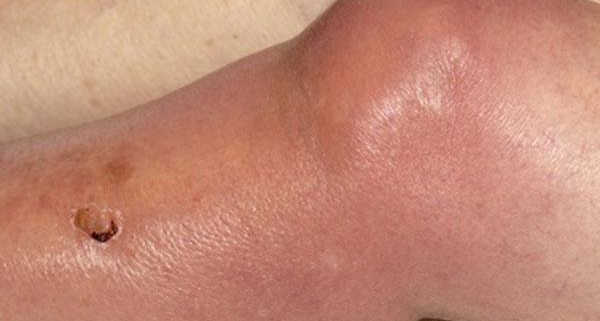
Septic Arthritis of the Hip in Children
Overview of Septic Arthritis of the Hip in Children
Septic arthritis, also known as infectious arthritis, is a form of arthritis that is caused by an infection in the joint. When this condition affects the hip joint in children, it is termed as septic arthritis of the hip in children. It is a relatively rare condition that can occur at any age, but it is most common in children under the age of three.
The hip joint is one of the most commonly affected locations for septic arthritis and if not promptly treated, it can lead to permanent joint damage and disability. Thus, one should have knowledge about this condition and its management.
Causes of Septic Arthritis of the Hip in Children
Septic arthritis primarily occurs due to a bacterial or fungal infection. Most commonly, the causative bacteria are Staphylococcus or Streptococcus. Here are a few ways how these microorganisms can reach the child’s hip joint:
– Through the bloodstream from another portion of the child’s body where there is infection.
– A penetrating injury to the hip allowing the bacteria or fungi to enter the joint.
Children with a weaker immune system are at higher risk. Other risk factors include a recent injury or joint surgery, and pre-existing health conditions such as chronic diseases or skin infections.
Symptoms of Septic Arthritis of the Hip in Children
The symptoms of septic arthritis often develop quickly – typically within a matter of hours or days. The most common symptoms include:
– Rapid onset of extreme pain in the hip that worsens with movement.
– Swelling and redness around the hip.
– Fever, along with chills.
- Limping or inability to walk.
In young infants, the symptoms could be non-specific and include general irritability, lack of appetite, and fatigue.
Diagnosis of Septic Arthritis of the Hip in Children
To diagnose septic arthritis of the hip in children, the healthcare provider will start with a physical examination of the child and will ask questions about the symptoms. In addition, a few tests will be necessary:
– Blood tests: To check for infection and inflammation.
- Imaging tests: X-ray or ultrasound of the hip to check for fluid accumulation.
– Joint fluid analysis: Fluid is extracted from the hip joint using a needle and then tested for infection.
Treatment Options for Septic Arthritis of the Hip in Children
Treatment for septic arthritis aims to eliminate the infection and relieve joint pain. Treatment options include:
– Antibiotics: If the infection is due to bacteria, antibiotics will be administered, usually through an intravenous (IV) line.
– Joint drainage: The accumulated fluid is removed from the hip joint. This can be done with a needle, a tube, or through surgery.
– Physiotherapy: Post-treatment, physiotherapy is recommended to restore hip movement and strength.
In severe cases, surgery may be needed to remove the infected tissue from the hip joint.
Living With Septic Arthritis of the Hip in Children
With proper treatment, most children recover fully from septic arthritis. During and post-recovery, a few things can help improve the child’s comfort and recovery process:
- Pain medications: Prescribed by the healthcare provider to manage pain.
– Rest: Limiting activities can help the joint recover.
– Physiotherapy: Exercises to help regain strength and movement.
It’s also crucial to ensure the completion of the prescribed antibiotic course even if symptoms improve early.
When to Seek Help for Septic Arthritis of the Hip in Children
If your child is showing any symptoms of septic arthritis of the hip such as hip pain, limping, or fever, it’s vital to seek medical help immediately. Remember, it’s a condition that warrants urgent attention to prevent permanent damage to the hip joint. It’s always better to be safe and address any concerns with your healthcare provider promptly.
This guide encompasses the necessary information about septic arthritis in children. However, individual health conditions may differ. Always follow the advice of the healthcare professionals for the best outcomes.
Remember, early intervention is key in managing septic arthritis, and with timely treatment, the prognosis is generally excellent.
